Downloaded 10 times

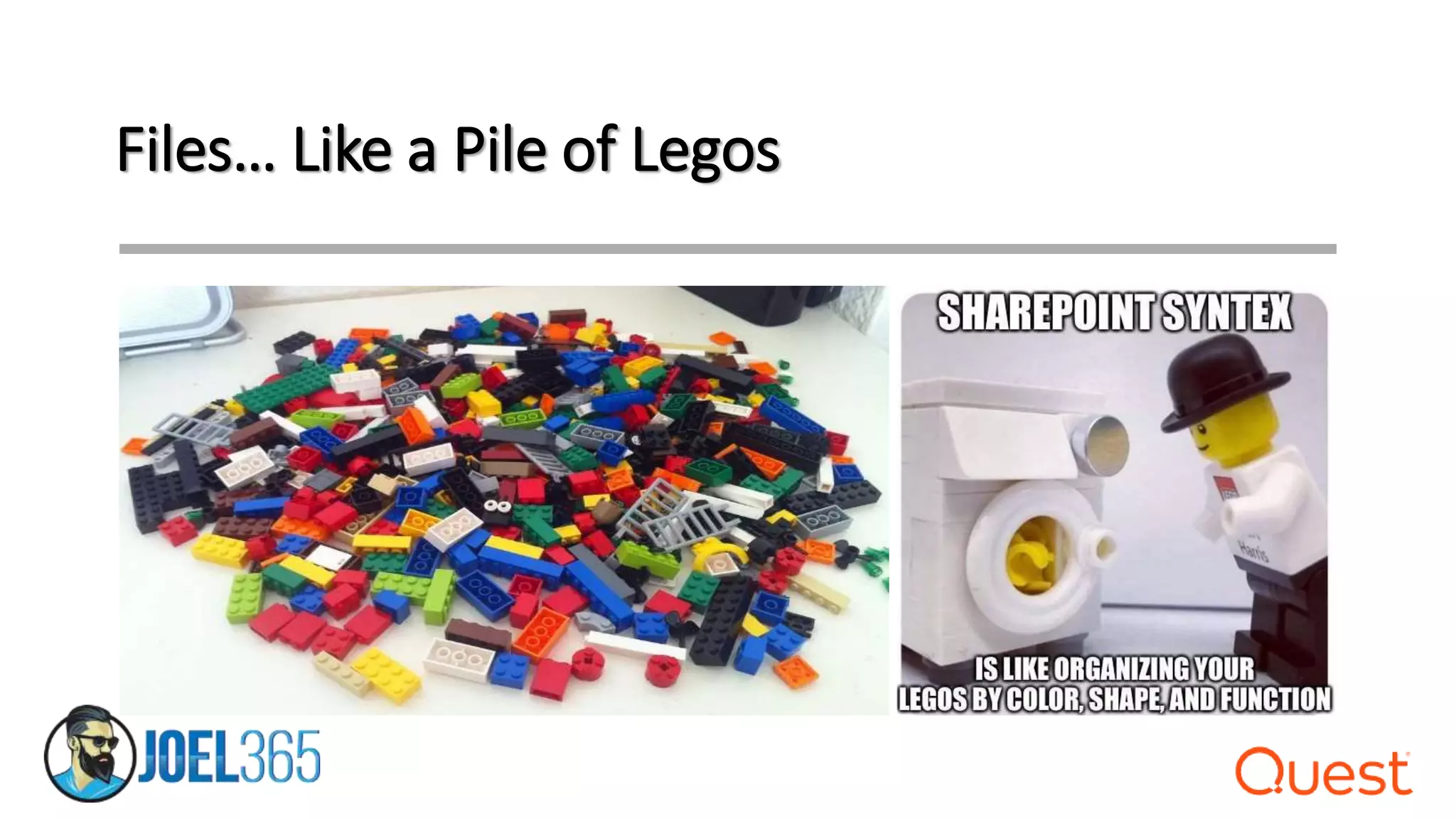
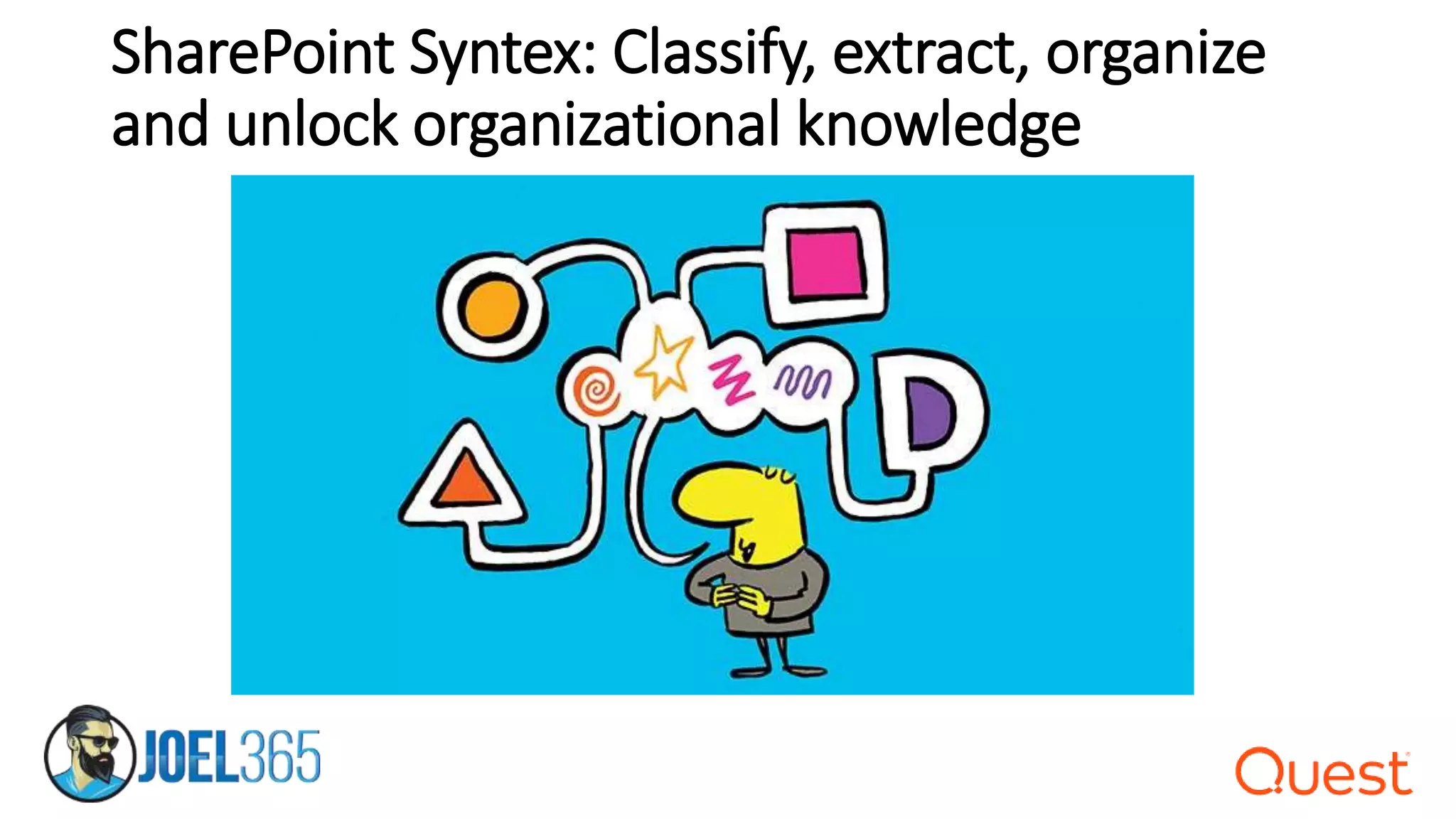
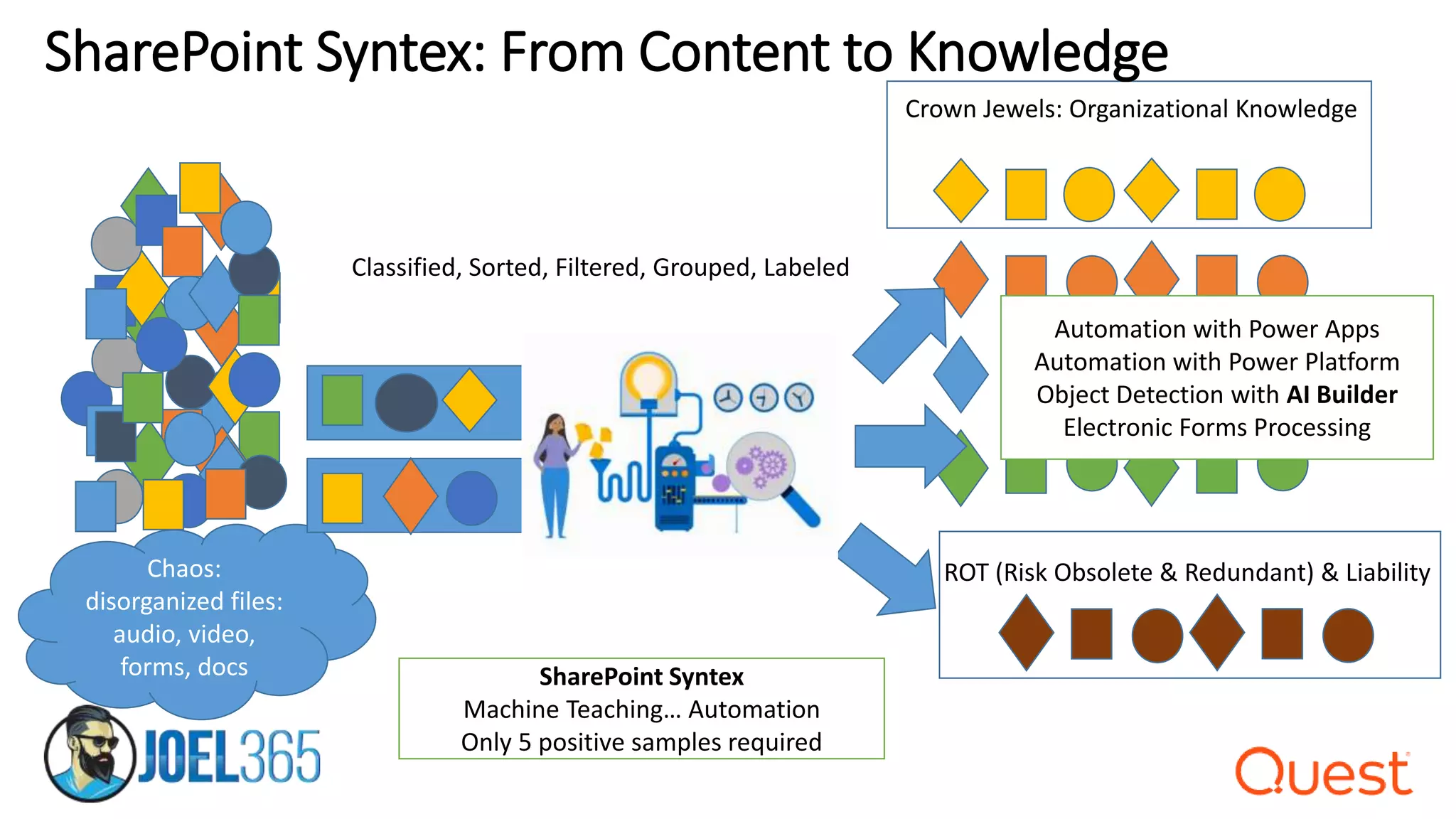

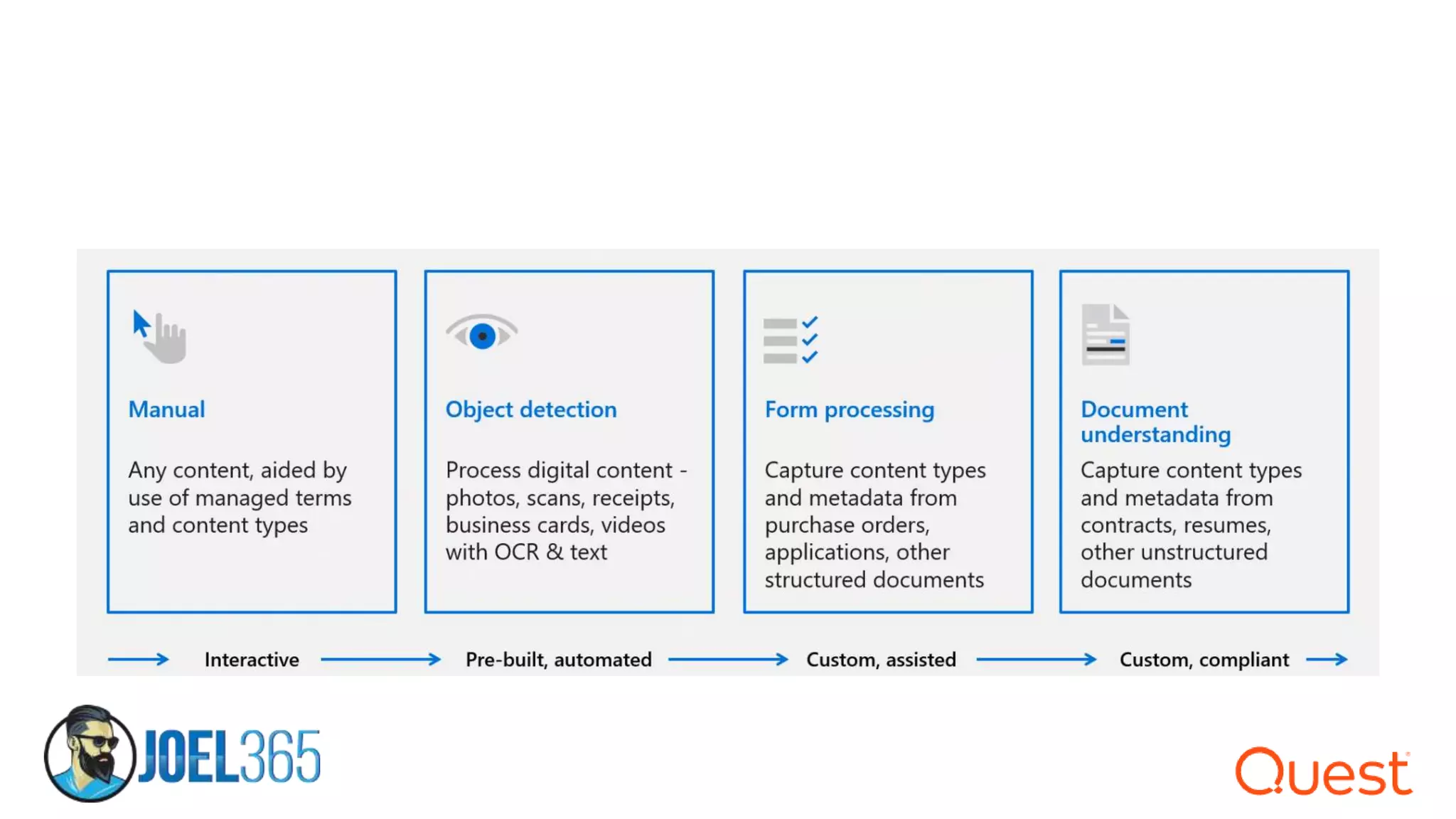
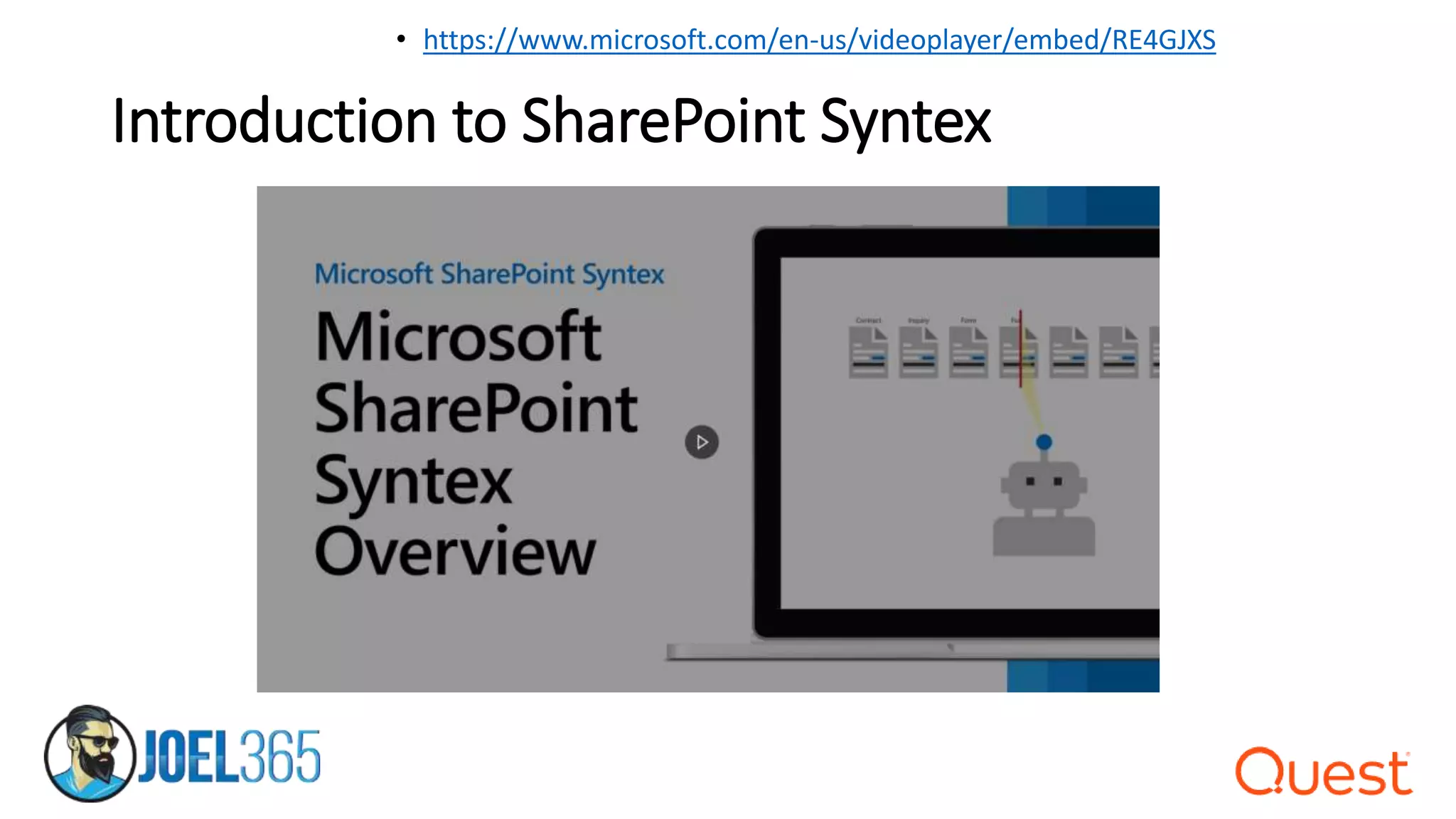

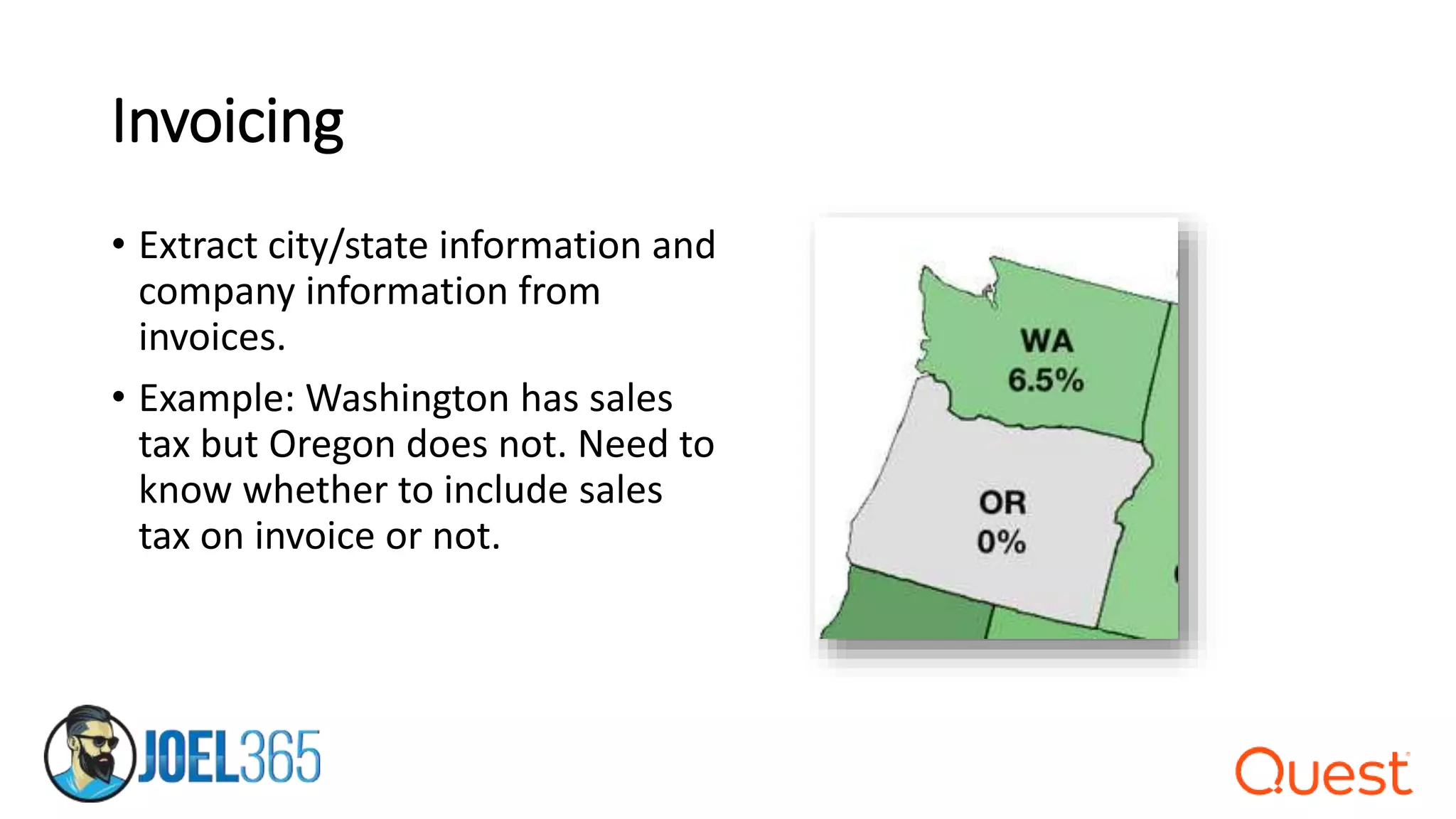



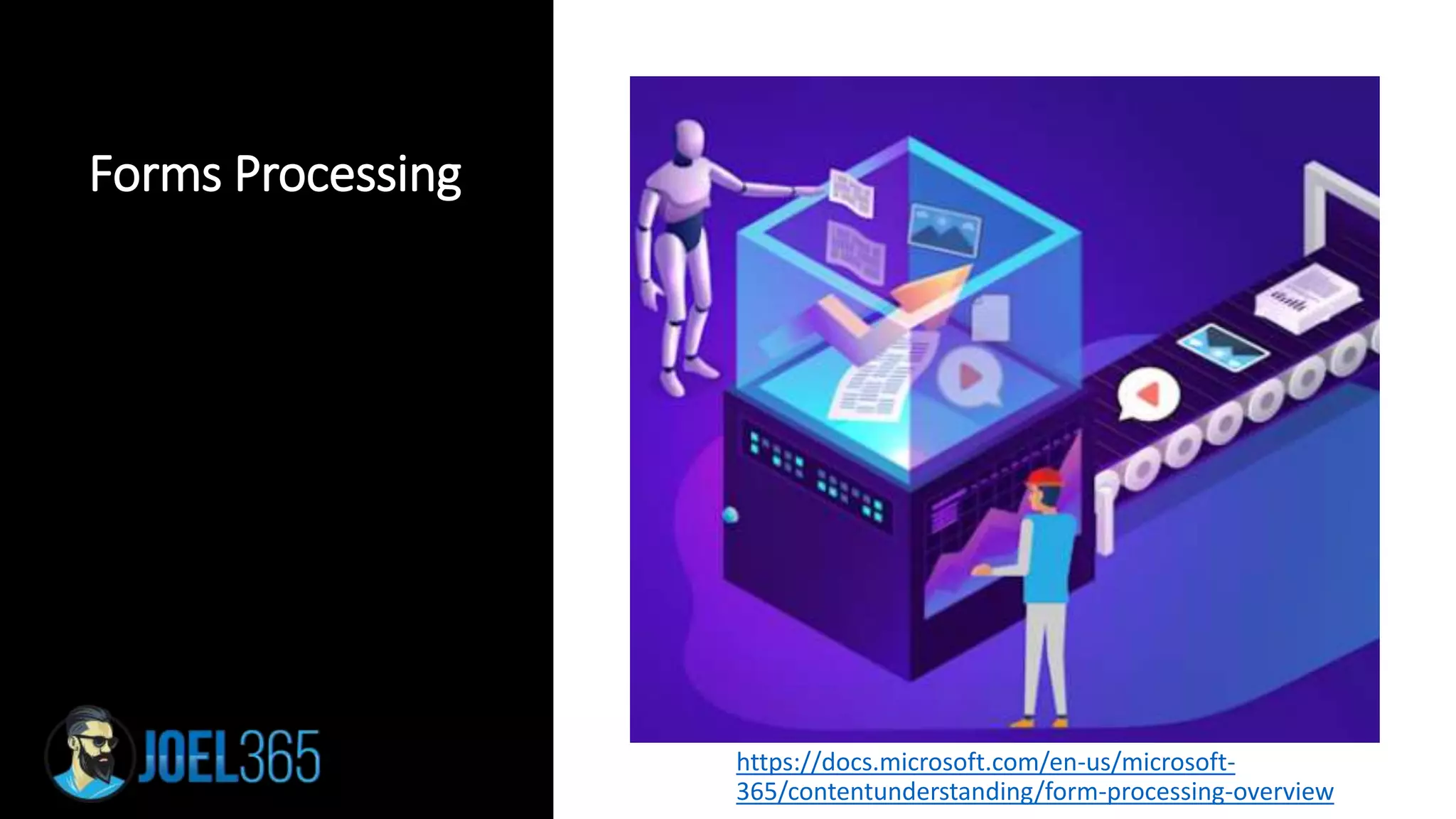

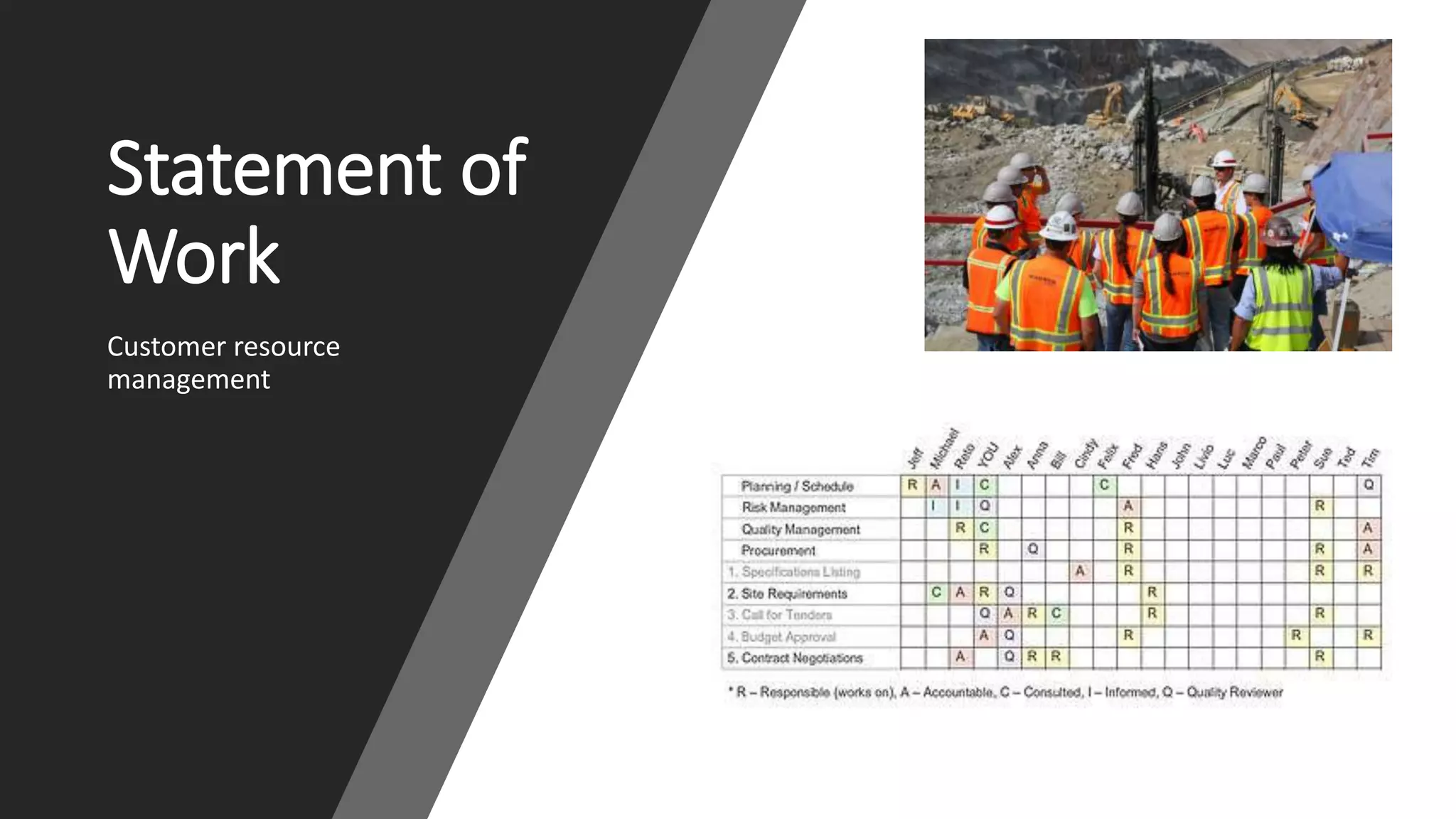
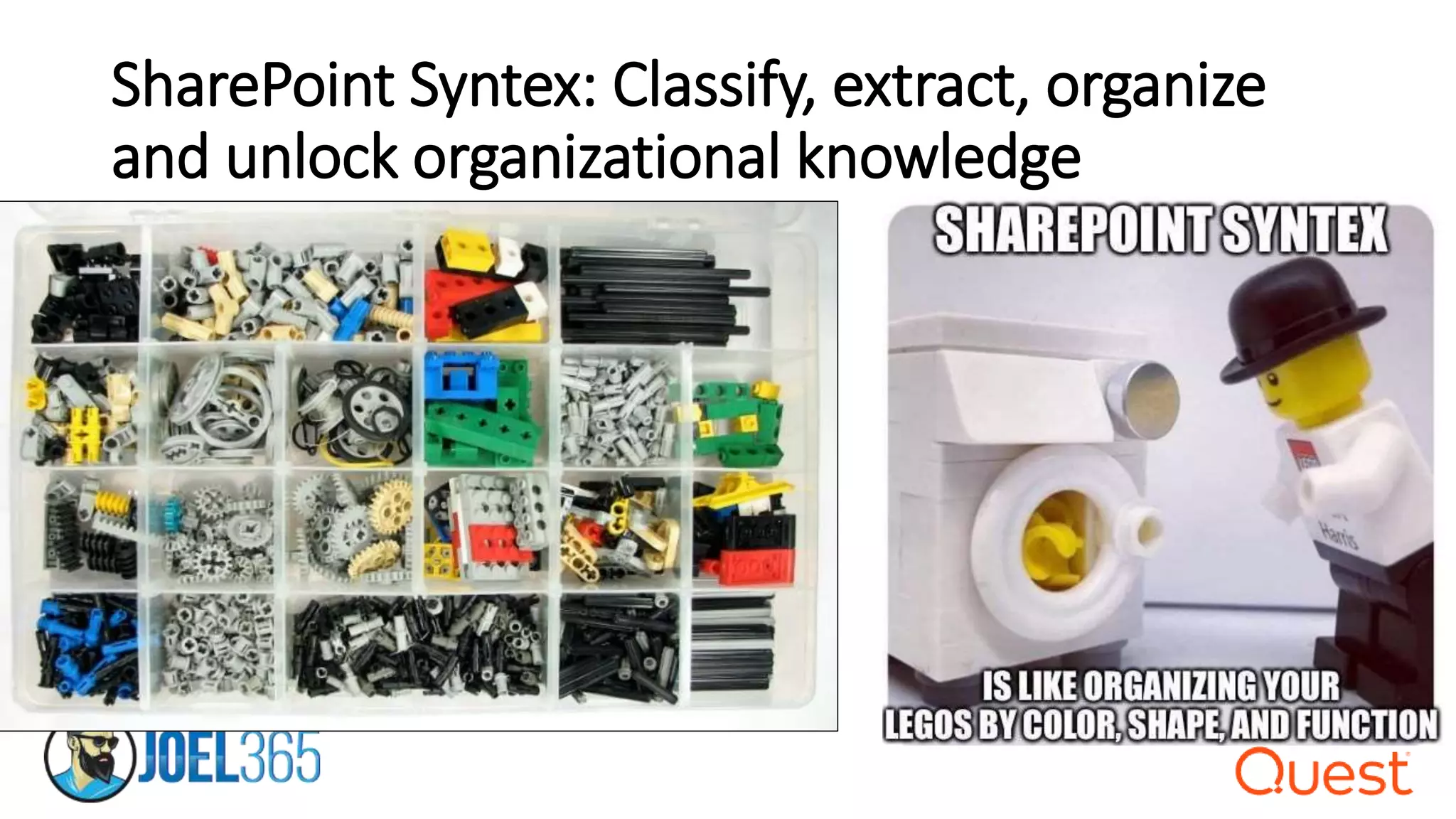


SharePoint Syntex can help organize unstructured files like documents, audio, and video using machine learning. It can classify content, extract key details, and group related items to unlock organizational knowledge. Some practical uses include extracting address and tax information from invoices, tracking timesheets for contract workers, processing digital forms for open enrollment, and managing expiring contracts and statements of work. The system requires only a few positive examples for training and can then automate tasks using Power Apps or other tools.
Introduction to TeamsHub and its role as a technical product management tool.
Files are compared to Legos, implying they can be structured creatively and effectively.
SharePoint Syntex aids in classifying, extracting, organizing, and unlocking knowledge.
SharePoint Syntex helps transform disorganized files into structured knowledge; requires minimal input samples.
Discussion on document understanding, focusing on unstructured and semi-structured documents.
A video resource introducing SharePoint Syntex and its benefits.
Five uses of SharePoint Syntex: invoicing, timesheets, HR management, contracts, and work statements.
How to extract necessary information from invoices, crucial for accurate tax reporting.
Demo focused on the capabilities of document understanding features.
Focus on the importance of timesheets, especially for nurses working with staffing organizations.
Discussing digital transformation initiatives for improving open enrollment processes.
Links to Microsoft Forms Processing documentation providing an overview of its applications.
Strategies for managing contracts with alerts for upcoming expirations.
Focus on customer resource management and its importance in statements of work.
Reiterating the capabilities of SharePoint Syntex in organizational knowledge management.
Contact information and links to Joel Oleson's professional and travel blogs for further engagement.
















